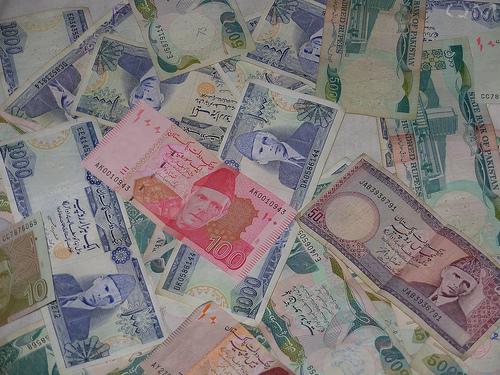
The announcements of national budgets in the developed world are considered key events for ruling parties. The delivery of the budget with its details such as where money will be raised for new projects and exactly what the budget will be spent upon are scrutinised by economists and financial analysts across the world.
The Pakistani fiscal budget 2009 -2010 is the first budget of the so-called democratically elected government of Asif Zardari. After 15 months in power the Zardari government was keen to show its finances were in order and that the economic team of the government has economic plans to steer the nation through the difficult times it faces.
Delivering the annual budget statement to the National Assembly, Minister of State for Finance Hina Rabbani Khar estimated that Pakistan had paid a price of about $35 billion for joining the US war on terror.
The details of the budget once it was announced were as follows
-
– The size of the consolidated budget, which includes provinces, is 2.4 trillion Pakistan rupees – $35.8 billion.
-
– 783.1 billion rupees has bee earmarked on development – no details were given
-
– 343 billion rupees – $4.2 billion was allocated to the army including 15% pay increase for all civil servants as well as a pay bonus.
-
– The trade deficit (the money Pakistan effectively owes to the world) is estimated to be $10.7 billion, with exports of $18.3 billion and imports $28.9 billion rupees in the coming fiscal year.
-
– Withdrawal of all subsidies on power and gas – an IMF condition
-
– An increase in allocation for the Benazir Income Support Programme to Rs 70 billion against last year’s Rs 34 billion, to apparently alleviate poverty.
The Pakistani budget was no different from any of its predecessors. The Junior Minister Hina Rabbani Khar highlighted in her speech the same old trade deficits and the same old missed export targets and the same old difficult economic conditions. She highlighted “Terrorist attacks have undermined Pakistan’s macroeconomic stability and dampened growth prospects,” “The global financial crisis seeped into the economy causing substantial decline in exports and a visible decline in foreign direct investment.”
What she didn’t mention was Pakistan’s dependency on foreign funds. The Zardari government like the Musharraf government is bankrupt and will always need foreign money to run even the most basic functions of government. While trying to drum up more financial support from friendly governments, Pakistan also has to run its budget plans past the International Monetary Fund, having accepted a $7.6-billion emergency loan to avert a balance of payments crisis in November 2008.
The Zardari government constructed a total budget Rs 2.482 billion yet the target for tax revenue collection is Rs 1.3775 trillion, this gap as this junior minister explained will be met through foreign loans and grants. The whole budget is built upon the prospects of future foreign money in flows. Like the previous Musharraf regime that relied on extensive borrowing, the Zardhari government plans to further bankrupt the nation.
Pakistan is in reality deep in junk bond territory according to credit rating firms. A number of analysts highlighted the problem Pakistan faces: “Defence and debt servicing costs may exceed estimates, resulting in a cut in development spending,” said Asif Qureshi, head of research at Invisor Securities in Karachi. “A lot of this budget will depend on external assistance being received in time because there are no real measures which will increase the tax base.”
Pakistan’s economy (GDP) is $164 Billion, Israel and Singapore with populations smaller than Lahore have economies larger than Pakistan. Pakistani budgets follow no consistent policies and the poor continue to get poorer.
What Pakistan needs is a radical new approach towards the economy. Pakistan’s strengths lay in its huge agricultural landscape and its mineral resources. Currently Pakistan is geared around the service sector and foreign direct investment (FDI), such economic architecture will continue making Pakistan dependent on foreign money. Pakistan needs to refocus its economy to its strengths and not imitate the West.
Pakistan should have a budget that can fund an agricultural led industrialisation. Such a policy will allow Pakistani industry to cater for its agricultural strengths and at the same time allow it to convert its immense minerals into material that can drive an industrial revolution in the country. This in turn will create millions of jobs and increase national wealth.
The current system sucks all economic activity out of the economy as it is not a budget for Pakistan, but a budget for a few opportunist politicians at the behest of the IMF and the US. New Pakistan needs a new economy which caters for Pakistan and does not work to keep free marketers happy. The current system in Pakistan will continue to fail the people as it is designed to cater for a handful of elite. The radical change Pakistan needs can only happen with the Khilafah taking back Pakistan’s outsourced economy and catering for its citizens which the current corrupt leadership refuses to do.
Coming soon – New Book
‘New Pakistan’
An in depth study into the economy of Pakistan and why it has failed to cater for its people. Policies for industrialisation and domestic economic development will be outlined showing how they will solve Pakistan’s economic problems.
